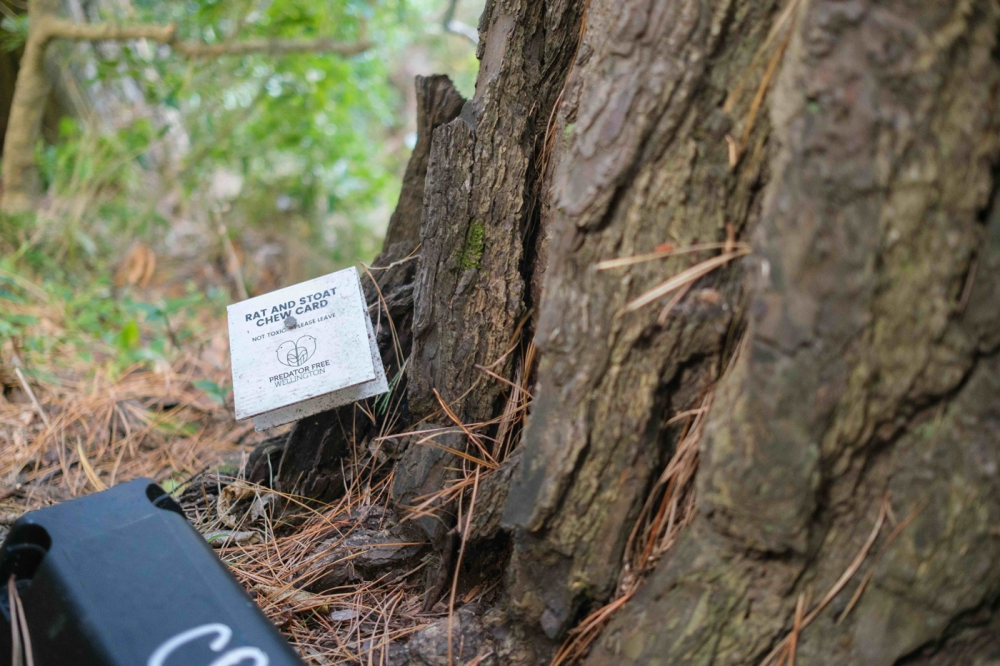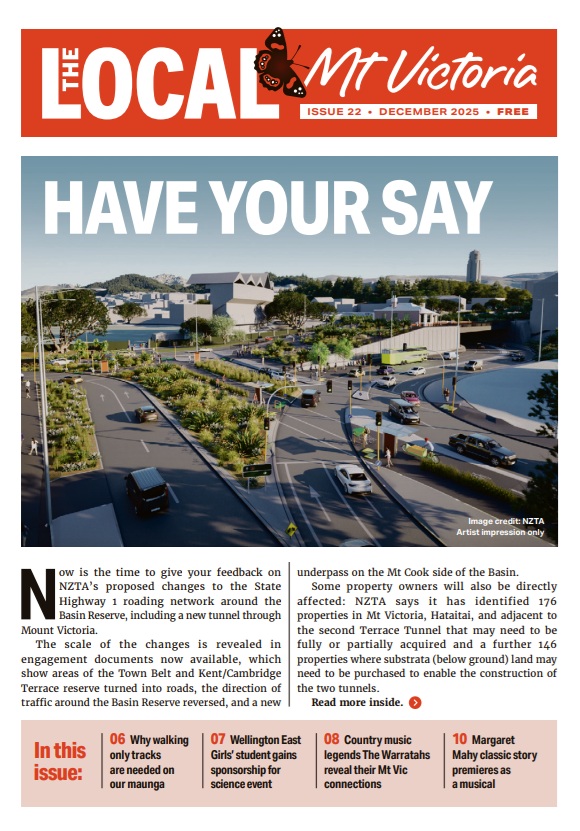
Mount Victoria can celebrate a win for its feathered residents, as Kasey McDonnell explains.
Predator Free Wellington has successfully eliminated introduced predators from much of Matairangi Mount Victoria.
Part of the Predator Free 2050 initiative, Predator Free Wellington wants to make Wellington the world’s first predator free capital city.
The organisation expanded the predator free zone to areas like Mount Victoria following a successful elimination of predators on the Miramar Peninsula.
Rats, stoats, and other introduced predators are a threat to native birdlife like tūī, pīwakawaka, and kererū.
Predator Free Wellington is eliminating introduced predators through a mix of monitoring cameras, chew cards, poison devices, and community monitoring.
The intense effort to remove predators has helped birdlife return. Miramar’s birdlife has shot up after their elimination of predators. Tūī are up 200%. Pīwakawaka are up 150%. Similar improvements can be expected for Mount Victoria in the future, according to monitoring carried out by the organisation.
Keaton Stevens, a field operator for Predator Free Wellington, explained how the programme is being rolled out while he was checking poison devices in the Town Belt.
First, the team plans where to install poison devices in a suburb. With support from residents, field teams go in and install devices on properties. After a month, the team takes a “close eye” on an area to understand the frequency of predators.
A lot of work is done by volunteers. “Our volunteers work so hard…volunteering is a huge part” of the project’s success, Keaton explained.
After a month of close monitoring and no predators, “we go into a biosecurity phase.”
Predator Free installs trail cameras with mayonnaise as a lure. It records predators re-entering the area so the team can eliminate them.
After nearly a year of effort, a lot of the Town Belt has moved to the biosecurity phase, Keaton said.
Predator Free Wellington uses its complex network of monitors and traps to create a detailed picture of the predators in areas like Mount Victoria.
Keaton estimated that “our project alone probably has over 200 [traps].” Their data collection base stations number in the thousands.
The data they collect helps them plan and predict the elimination of predators in areas like Newtown.
Keaton explained that their team members Sally and two kurī (dogs) Kimi and Rapu are vital for finding spots frequented by rats, stoats, and weasels.
“We’ve honed the edge of the sword in the approach we take. We can quite confidently predict how long a certain area is going to take.”
The community is noticing the effect of Predator Free Wellington’s hard work. “Members of the public [tell me] ‘I’ve been living on this premises for 20 years: the bird life is far better.’”
Predator Free Wellington’s efforts to support neighbourhood birdlife depend on Mount Victoria residents.
Getting involved in conservation with friends, sharing updates from Predator Free, or letting neighbours know about the project are helpful to their mahi, Keaton explained.
Through community collaboration, “the birdlife is only going to get better and better.”
To learn more or get involved, visit pfw.org.nz.
Kasey McDonnell writes a Wellington-based climate change newsletter. Read it and subscribe for free at threesixtysix.news.
OTHER STORIES





